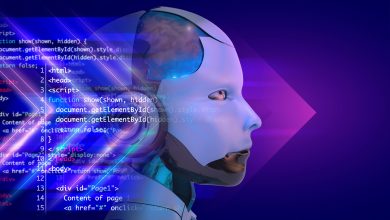
Businesses are no longer asking when they’ll adopt AI, but how they’ll adopt it. Across virtually every industry, organizations are pouring resources into AI-ready infrastructure – curating their data, implementing governance frameworks, fine-tuning their models, or testing off-the-shelf solutions. They know that in order to become AI champions, their data environment needs to be ready for AI integration. Yet, while businesses are preparing their systems, they may be neglecting their most critical AI asset – their people. Regardless of whether a business is seeking to train its own AI model or deploy an off-the-shelf product, it’s never as simple as plug-and-play. AI’s effectiveness depends on how well employees can integrate it into their workflows, interpret its outputs, and trust its recommendations.
However, it’s important to remember that confidence does not equal competence. In a 2024 report, 81% of employees claimed they were ready for AI, yet only 12% demonstrated the skills needed to use it effectively. This gap between perceived and actual “readiness” presents a serious risk to AI adoption.
The Reality of AI Abandonment
When employees lack the training needed to work alongside AI, they’re prone to misinterpreting insights, failing to act on recommendations, or worse – actively resisting the technology. The result? Expensive AI initiatives that never make it past the pilot phase, derailed by a talented but underprepared workforce. Gartner predicts that 1 in 3 generative AI projects will be abandoned after proof of concept by 2025, due to either poor data quality, inadequate risk controls, escalating costs, unclear ROI, or lack of employee preparedness.
The issue isn’t that businesses lack the ambition to embrace AI – it’s that they assume AI readiness stops at infrastructure. In reality, employee readiness is just as critical, if not more so, than AI-ready infrastructure. Without a workforce that understands, trusts, and effectively utilizes AI, even the most sophisticated systems will fail to deliver meaningful business value.
Why Data Confidence Matters
AI may be the engine of innovation, but data is the fuel – and without trust in that data, AI adoption will fail before it gains momentum. McKinsey reports that 70% of AI projects become derailed due to difficulties with data, including governance and integration challenges. Yet, these challenges don’t just stem from technical shortcomings; they also reflect a workforce that lacks confidence in the data that AI relies on. If employees don’t trust the accuracy, relevance, or completeness of the data feeding AI models, they are unlikely to trust AI-driven insights – leading to hesitation, skepticism, and ultimately, significant underutilization of AI.
Inconsistent data literacy across the organization only compounds this issue. Employees who struggle to interpret AI-generated insights may dismiss them as unreliable, apply them incorrectly, or default to traditional decision-making methods that may feel “safer” but are actually less effective. In other cases, AI-driven outputs may be ignored simply because employees don’t understand how those recommendations were derived. This is where transparency and explainability – often overlooked by AI adopters – becomes absolutely critical. Without clear, comprehensible insights, AI remains a “black box,” creating more questions than answers. If an employee can’t understand why an AI model has made a particular recommendation, they are far more likely to distrust it or even write it off as a mistake.
Company policy also plays a role here. If a business signs off on and implements an AI solution, but doesn’t adequately train its employees or put strict data governance practices in place, who is responsible if AI does make a mistake? If employees are concerned that they may be penalized for acting on a mistake that emanated from AI output, they are more likely to reject that output and use their own intuition instead.
“If You Build It, They Will Come”
AI is pitched as an enabler or facilitator. It’s supposed to make life easier for employees – automating workflows, boosting productivity, and improving decision-making. Because of this reputation, many leaders assume that AI adoption will happen naturally with an “if you build it, they will come” mindset. The reality is far less glamorous – it requires deliberate investment in upskilling, governance, and data fluency. Businesses that fail to support employees in their AI journey risk creating a workforce that either misuses AI or avoids it altogether, turning what should be a competitive advantage into an expensive misstep. In other words, failing to prepare employees for AI is preparing them to fail.
For this reason, AI education and upskilling must be an equal priority. Training shouldn’t just focus on technical proficiency either – employees need to understand AI’s role within the business, how to interpret its recommendations, and when human oversight is necessary. When should they trust, when should they not trust, and where does the responsibility lie? Without defined policies like these, AI remains an abstract concept to employees rather than a tool for productivity. Employees should know who is responsible for AI-driven decisions and how those decisions are made. Ambiguity leads to hesitation, while clear guidelines empower teams to embrace AI with confidence.
AI success isn’t just a technology problem; it’s a people problem too. If businesses adequately prepare their teams for AI integration, they will ensure that their AI initiatives deliver on their investment and perhaps even futureproof their workforce for the AI innovations that are yet to come.



